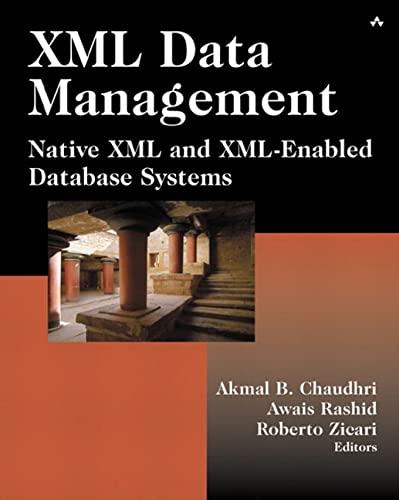Question
The design document is where all the details of the design are provided. The design is then correlated against the project requirements. Design Document Outline
The design document is where all the details of the design are provided. The design is then correlated against the project requirements.
Design Document Outline
Describe the problem thats being addressed
In other words The person reading the design document may/may not know anything about the problem that this design is going to solve. Assuming a reader reading level at the same as your teammates provide an overview of the problem and a framework where this program would be used and who would be the user.
Provide table of terms and abbreviations
Provide an overview of the requirements document (RD) (in this case Spring 2018 Capstone Programming Project.docx). A great deal of this section can be cut/pasted from the RD.
Provide a table with RSIDs, Description, Requirements document reference. This table will be quite large. Organization and clear, crisp wording are essential.
In other words you should almost be able to quote the requirements document (RD) that was provided. After all, that is all that youre required to provide. As capstone students, you should strive to provide no more, and certainly no less, than what was specified.
To accomplish that objective, you have to comb through the RD and identify each of the projects requirements. Requirements tend to be described with verbs such as shall or will but can presented in a variety of forms, for example, some requirements are implied rather than explicitly stated. Regardless, satisfaction of a requirement should be objectively determinable. Vague requirements, such as program must be user friendly cant be objectively confirmed and so arent really requirementsdont include them. Suggest that as you isolate a requirement, mark through it. The goal will be that all requirements in the requirements document are covered.
For each requirements identified, give it a requirement statement identifier (RSID). The RSID can be numeric or alphanumeric. It should be somewhat self-defining because there will literally be dozens of places in the documentation where each RSID is referenced. For example, if there was a requirement to have an undo option, a RSID such as Edit.Undo.001 is much more descriptive than 12345.
Your design should be totally driven by the requirements. In your solution design there should to be a portion of that solution that is associated with satisfying each requirement. Furthermore, the test engineer must develop tests which can prove that a given requirement is satisfied.
Provide an overview of your solution (can be narrative or hybrid with illustrations). Address issues such as why youre using the stated approach. What other approaches were considered and why were they discarded.
Provide a block diagram, to at least 3 levels, with narrative (each block with a unique identifier BDID) Consider What do the blocks represent? What do the lines connecting the blocks represent. How does program data flow fit into this diagram?
Provide a class diagram with each class uniquely named. This will be the class identifier (CLID). For each class method supply a description of the purpose, input parameters, output returned, assumptions/limitations/exceptions thrown
Provide screenshots or depictions of each screen that contribute to normal program execution. Each screen should have an unique identifier (SCID).
Provide an overview of the error processing performed by the program. Each error message should have a unique id (EMID). Provide a list of error messages that may be generated. Include the class/method that outputs that message and suggested actions for the user to take.
Database Design Typically a database which is associated with a program carries the responsibility for maintaining the data that is provided. The database design represents a significant portion of the project. The following describes the design documentation requirements associated with a database. If the program does not use a database, this will be a blank section.
Entity-Relationship Diagram (ERD) which should indicate all tables, their relationship(s) with other tables, mapping cardinality, and data dictionary.
A summary of all procedures, functions and views that are defined in the database. Include a statement indicating the purpose, input/output parameters, and typical usage by the program.
DDL statements which create the database, its tables, relationships, procedures, functions, and views.
Describe how run-time assistance is provided. For example, is there a Help item that can be clicked. If so, what is displayed. Is there an index? Are there context dialog boxes? Are there tool tips?
Provide table in which each row is a RSID. For each row, complete the columns BDID, CLID, SCID with an annotation which indicates if the block, class, and/or screen significantly contributes to the satisfaction of associated RSID.
Use appendices to describe topics such as file formats, database schema, state diagrams, significant data structures,
Your document should now embody everything that is needed to write the code, develop tests, and tell the user how use the program.
Step by Step Solution
There are 3 Steps involved in it
Step: 1

Get Instant Access to Expert-Tailored Solutions
See step-by-step solutions with expert insights and AI powered tools for academic success
Step: 2

Step: 3

Ace Your Homework with AI
Get the answers you need in no time with our AI-driven, step-by-step assistance
Get Started


